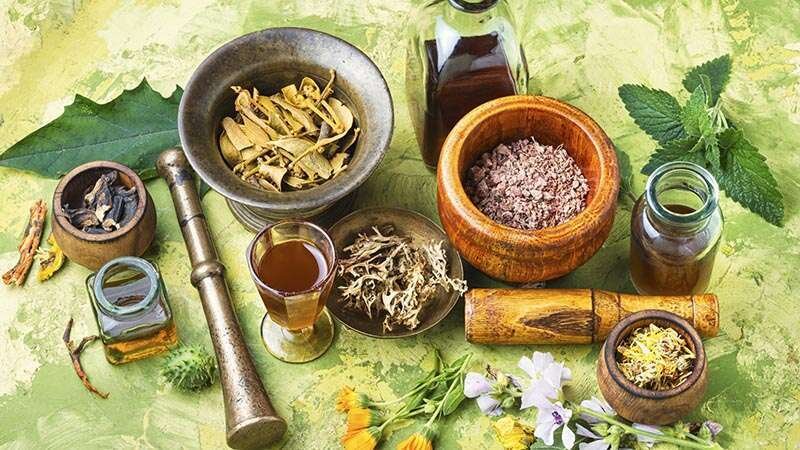What are Medicinal Plants? | Benefits of Medicinal Plants
Medicinal Plants
Medicinal plants have been used for thousands of years to treat various ailments and promote overall health and well-being. From ancient Ayurvedic practices in India to Traditional Chinese Medicine, herbal remedies have played a vital role in healing and preventing illness. In recent years, there has been a growing interest in using natural remedies as an alternative to conventional medicine, leading to increased research and awareness of the therapeutic potential of medicinal plants.

These plants contain a wide range of chemical compounds that have been found to have medicinal properties, such as anti-inflammatory, antimicrobial, and antioxidant effects. Many of these compounds are also the basis for pharmaceutical drugs used today. However, unlike synthetic drugs, medicinal plants are often less expensive and have fewer side effects.
In addition to their healing properties, medicinal plants are also environmentally friendly and sustainable. They can be grown without the use of harmful chemicals and pesticides, making them a safer and healthier choice for both humans and the environment.
Despite the many benefits of medicinal plants, it is important to note that they should not be used as a replacement for professional medical advice and treatment. It is always recommended to consult with a healthcare provider before using any herbal remedies, especially if you are pregnant, nursing, or have a pre-existing medical condition.
In this blog, we will explore some of the most popular medicinal plants and their uses, as well as provide tips on how to use them safely and effectively. Whether you are looking to improve your overall health, treat a specific condition, or simply incorporate more natural remedies into your lifestyle, medicinal plants offer a powerful and sustainable solution.
What are Medicinal Plants?
Medicinal plants are plants that are used for medicinal purposes. These plants contain active compounds that have therapeutic properties and can be used to treat various health conditions. Medicinal plants have been used in traditional medicine for centuries, and many of these plants are still used today to treat a wide range of ailments.
Benefits of Medicinal Plants
Medicinal plants offer several benefits, including:
Natural and safe alternative to synthetic drugs.
Cost-effective.
Can be easily grown at home.
Can treat a wide range of health conditions.
Have few or no side effects.
Five Medicinal Plants that can be Grown in Your Home Garden
Aloe Vera:
Aloe Vera is a popular medicinal plant that has been used for centuries to treat various health conditions. It has anti-inflammatory, anti-bacterial, and anti-fungal properties and is commonly used to treat skin conditions such as burns, cuts, and eczema. Aloe Vera can be grown easily in a pot indoors or outdoors in a warm climate.
Maintenance Ideas:
Aloe Vera prefers well-draining soil and bright, indirect light. It’s best to water them once a week, and they require minimal fertilization.
Peppermint:
Peppermint is a popular medicinal herb that has been used for centuries to treat various health conditions. It has anti-inflammatory, anti-bacterial, and anti-viral properties and is commonly used to treat digestive issues such as bloating, gas, and nausea. Peppermint can be grown easily in a pot indoors or outdoors in a cooler climate.
Maintenance Ideas:
Peppermint prefers well-draining soil and bright, indirect light. It’s best to water them once a week, and they require regular fertilization during the growing season.
Chamomile:
Chamomile is a popular medicinal herb that has been used for centuries to treat various health conditions. It has anti-inflammatory, anti-bacterial, and anti-spasmodic properties and is commonly used to treat anxiety, insomnia, and digestive issues. Chamomile can be grown easily in a pot indoors or outdoors in a warm climate.
Maintenance Ideas:
Chamomile prefers well-draining soil and bright, indirect light. It’s best to water them once a week, and they require regular fertilization during the growing season.
Echinacea:
Echinacea is a popular medicinal herb that has been used for centuries to boost the immune system and treat various health conditions. It has anti-inflammatory, anti-viral, and anti-bacterial properties and is commonly used to treat colds, flu, and other respiratory infections. Echinacea can be grown easily in a pot indoors or outdoors in a warm climate.
Maintenance Ideas:
Echinacea prefers well-draining soil and bright, indirect light. It’s best to water them once a week, and they require regular fertilization during the growing season.
Ginger:
Ginger is a popular medicinal herb that has been used for centuries to treat various health conditions. It has anti-inflammatory, anti-bacterial, and anti-spasmodic properties and is commonly used to treat digestive issues, nausea, and headaches. Ginger can be grown easily in a pot indoors or outdoors in a warm climate.
Maintenance Ideas:
Ginger prefers well-draining soil and bright, indirect light. It’s best to water them once a week, and they require regular fertilization
FAQs
Conclusions:
In conclusion, growing medical plants within the home has numerous advantages that should not be overlooked, and they can deliver a variety of significant health advantages. They are critical in the provision of first assistance and the treatment of numerous medical problems. The advantage of growing these plants within your home is that you will have easy access when you need them. By cultivating these plants in your home, you can improve your general health and well-being and reduce stress. So, if you are looking for an easy and affordable way to improve your health, consider growing some medical plants inside your home.